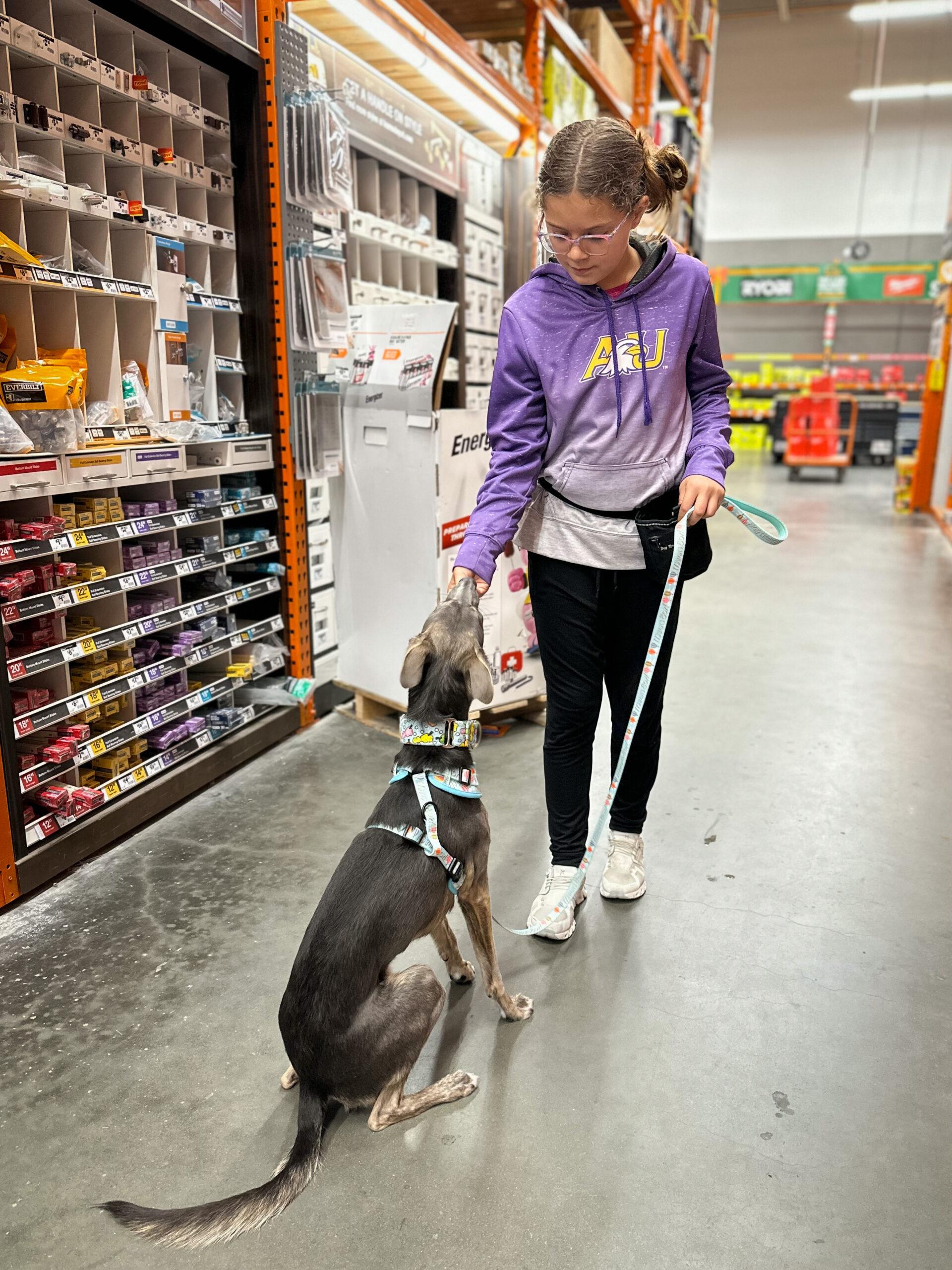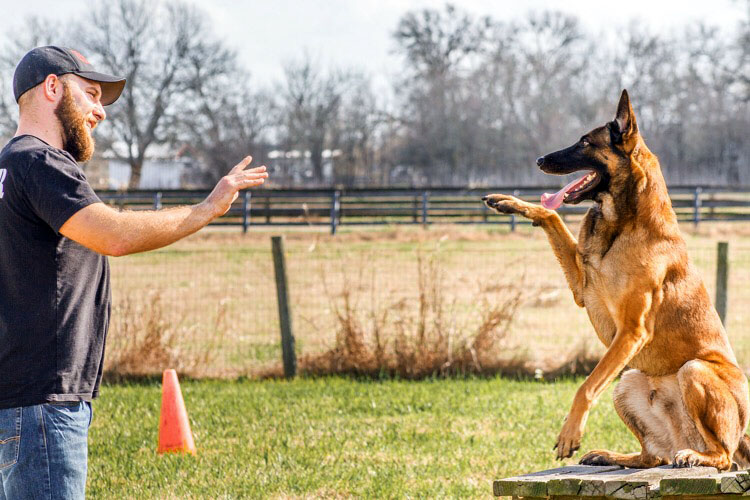Important Strategies for Efficient Dog Training You Required to Know
Important Strategies for Efficient Dog Training You Required to Know
Blog Article
Essential Tips for Successful Dog Training: A Guide for Family Pet Owners
Effective dog training is a complex process that needs a tactical technique customized to both the family pet's character and the owner's objectives. Comprehending how to navigate these challenges can considerably boost the training experience, inevitably changing the relationship between proprietor and canine.
Recognizing Canine Behavior
Understanding pet habits is necessary for efficient training and fostering a harmonious partnership between canines and their proprietors. Canines connect largely with body language, vocalizations, and activities, making it critical for proprietors to translate these signals properly. Recognizing a pet dog's position, tail placement, and ear positioning can supply understandings into its emotion. As an example, a wagging tail does not always indicate joy; it can also indicate enjoyment or anxiousness.

Socialization plays a significant function in canine behavior; direct exposure to different settings, people, and other animals can considerably influence a canine's character. Elements such as type characteristics and private temperament should lead training methods, as some breeds may have certain behavior qualities that demand customized methods. By recognizing these elements, proprietors can create an encouraging atmosphere that urges positive actions, leading to effective training results and a much deeper bond with their animals.
Establishing Constant Commands
Reliable interaction with your dog starts with establishing consistent commands. This fundamental component of training is important for fostering understanding between you and your animal. Consistency in the commands you use makes certain that your dog can reliably associate details words or phrases with the wanted habits.
When picking commands, pick clear, unique words that are very easy to set apart and claim from each other. Avoid making use of similar-sounding commands that may confuse your dog. For instance, utilizing "rest" and "remain" is suitable, however "sit" and "struck" might result in misunderstandings.
Additionally, maintain the exact same tone and volume for each command. Pet dogs are sensitive to singing signs, so varying your tone can create confusion.
It is just as vital to make certain that all relative are on the exact same page pertaining to the commands used. A united front in command usage will avoid blended signals and strengthen the understanding process.
Positive Reinforcement Methods
The power of positive support in pet training lies in its capability to motivate preferred habits with rewards and appreciation. This technique is based in the principle that behaviors adhered to by beneficial end results are more probable to be repeated. By integrating positive reinforcement into your training regimen, you can successfully shape your pet dog's habits in a useful fashion.
To apply favorable support, it's necessary to determine what motivates your pet dog, whether it be treats, toys, or verbal praise. When your pet dog carries out a wanted action, such as resting on command, right away award them with a treat or love. This organization in between the command and the favorable outcome reinforces their understanding.
It's critical to timing the incentives appropriately; delivering the reinforcement within seconds of the wanted actions aids your canine make the connection (dog training). Furthermore, consistency is key-- make certain that all relative make use of the exact same commands and incentive systems to avoid confusion

Slowly, you can lower the frequency of deals with as your pet finds out the behavior, transitioning to applaud or recurring benefits. This method not just fosters a strong bond between you and your pet dog however additionally promotes a positive knowing environment, making training a satisfying experience for both.
Socialization and Interaction
Continually exposing your site link pet to a range of atmospheres, individuals, and various other pets is essential for their social advancement. Socializing needs to begin early, preferably during the crucial home window of 3 to 14 weeks, when young puppies are most receptive to brand-new experiences. Nevertheless, older pets can additionally gain from ongoing socialization efforts.
Present your dog to different settings, such as parks, pet-friendly stores, and urban areas. This direct exposure helps them adjust to different stimuli, lowering stress and anxiety and fear feedbacks. Encourage favorable interactions with other pet dogs and individuals, ensuring that these encounters are secure and regulated to foster confidence.
Make use of structured playdates with well-mannered canines, as this can boost your dog's social abilities and educate them suitable behavior. Obedience courses and training sessions likewise supply excellent chances for socialization, permitting your canine to connect with others in a supervised atmosphere.
Display your pet's body movement throughout interactions, as this will certainly assist you assess their convenience level. Gradually raise exposure to more challenging circumstances while making sure that each experience is positive. A well-socialized canine is most likely to exhibit balanced actions, making them a happiness to have in any setup.
Dealing With Typical Training Difficulties
Every pet proprietor will certainly run into training challenges at some point, despite their dog's age or socialization level. Determining usual concerns such as stubbornness, diversions, and terror can aid in creating effective strategies for renovation.

Gradually present disturbances as the pet comes to be extra proficient in commands. Short, frequent training sessions are additionally reliable in keeping focus.
Terror can impede a canine's knowing process. Steady desensitization to the resource of concern, coupled with positive reinforcement, can aid reduce anxiety. Perseverance is vital; never ever require a dog right into a circumstance that triggers distress, as this may aggravate the concern.
Eventually, understanding and dealing with these common obstacles with an organized strategy will certainly promote a more effective training experience, reinforcing the bond in between pet dog and owner while promoting effective discovering.
Final Thought
In summary, successful canine training depends on an extensive understanding of canine habits, the establishment of consistent commands, and the application of try here positive support strategies. Socialization plays an important function in developing well-adjusted pet dogs, while resolving common training obstacles calls for perseverance and adaptability. By carrying out these important strategies, animal proprietors can foster a strong bond with their dogs and promote preferable actions, eventually bring about a harmonious connection in between human beings and their canine companions.
Comprehending pet behavior is important for effective training and promoting an unified partnership between dogs and their proprietors.Socializing plays a significant role in canine habits; direct exposure to numerous environments, people, and other pets can dramatically influence a dog's character.The power of favorable support in pet training lies in its capacity to urge desired behaviors with benefits and appreciation. By including favorable reinforcement into your training regimen, you can successfully form your dog's habits in a positive fashion.
In recap, successful pet dog training counts on a thorough understanding of canine actions, the facility of consistent commands, and the application of positive reinforcement strategies.
Report this page